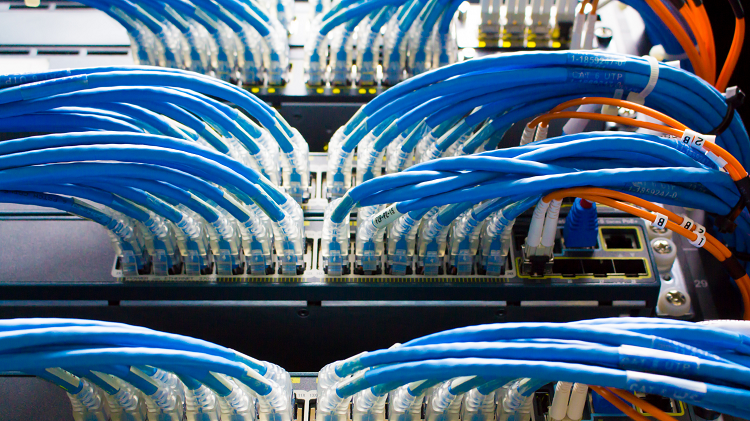Systems of communication that are effective and trustworthy are important to the functioning of businesses. High-speed data transfer is essential for exchanging huge files, holding video conferences, and using cloud-based apps. Many businesses use structured cabling systems to guarantee smooth communication and minimum signal interference. The advantages of structured cabling and how it facilitates quick data transfer are examined in this article.

Enhanced Speeds of Data Transmission:
The ability of structured cabling to handle high-speed data transfer is one of its main features. Businesses need a stable and quick network infrastructure due to the rising demand for bandwidth-intensive applications like video streaming and cloud computing. Advanced cabling technologies, such as fiber optics and Cat6a cables, which are built to accommodate faster data transmission speeds, are used by structured cabling systems. These cables can transmit data more quickly and effectively because of their higher bandwidth capacity and reduced attenuation.
Lower Signal Interference
The reliability of data transmission and network performance may both be greatly impacted by signal interference. Signal interference is reduced by structured cabling by using effective cable management methods. By separating and organizing the wires according to their purpose, electromagnetic interference (EMI) and crosstalk are less likely to occur. In order to further reduce interference, structured cabling systems include shielding and grounding techniques. This careful process makes sure that data transmissions are unaltered and unaffected by outside interference.
The capacity to be flexible and to scale up:
Businesses often face expansion and technological improvements, necessitating the adjustment of their infrastructure. Future additions and alterations may be accommodated with the flexibility and scalability provided by structured cabling. An effective structured cabling system enables businesses to add, delete, or relocate devices without affecting the network as a whole. This adaptability decreases expenses related to system downtime during changes while also saving time.
Troubleshooting and centralized management:
Systems with structured cabling provide centralized administration, which makes troubleshooting and maintenance easier. Network administrators may easily discover and fix any problems since all network connections are categorized and identified. This simplified procedure reduces downtime and makes sure the network performs at its best. Additionally, structured cabling makes maintaining numerous cabling systems simpler, resulting in longer-term cost savings and more effective operations.
Improved Future-Proofing and Reliability:
Long-term dependability and future-proofing advantages come from investing in structured cabling systems. As a result of these systems’ design compliance with industry standards and requirements, compatibility with cutting-edge technologies is guaranteed. Businesses may handle the most recent network protocols and applications with a well-designed structured cabling infrastructure without having to make costly modifications or replacements. Organizations can maintain a competitive edge in the quickly changing digital market because to this scalability and adaptability.
Conclusion
High-speed data transmission and signal interference reduction depend heavily on structured cabling. Organizations may collaborate with a respected Rapid Voice and Data Solutions provider that specializes in developing and executing structured cabling systems customized to their unique requirements to get the best outcomes.
Read More Here:
Different Components of a Structured Cabling System
How Does Structured Cabling Differ from Traditional Point-to-Point Cabling
What are the Advantages of Using Structured Cabling in a Network
What is the Purpose of Cable Management in Structured Cabling
What is Low Voltage Structured Cabling Used For
What are the Differences Between Cat6 and Ethernet
Are Internet Connections Necessary for Security Cameras
How Do Wireless Security Cameras Get Power
Which Types of Cameras Are Used in CCTV
The Benefits of Recording Through Surveillance CCTV
What Differentiates Horizontal and Vertical Structured Cabling
Which Types of Cables Are Typically Used in Structured Cabling
What are the Structured Cabling Industry Standards
What are the Latest Networking and Structured Cabling Trends
